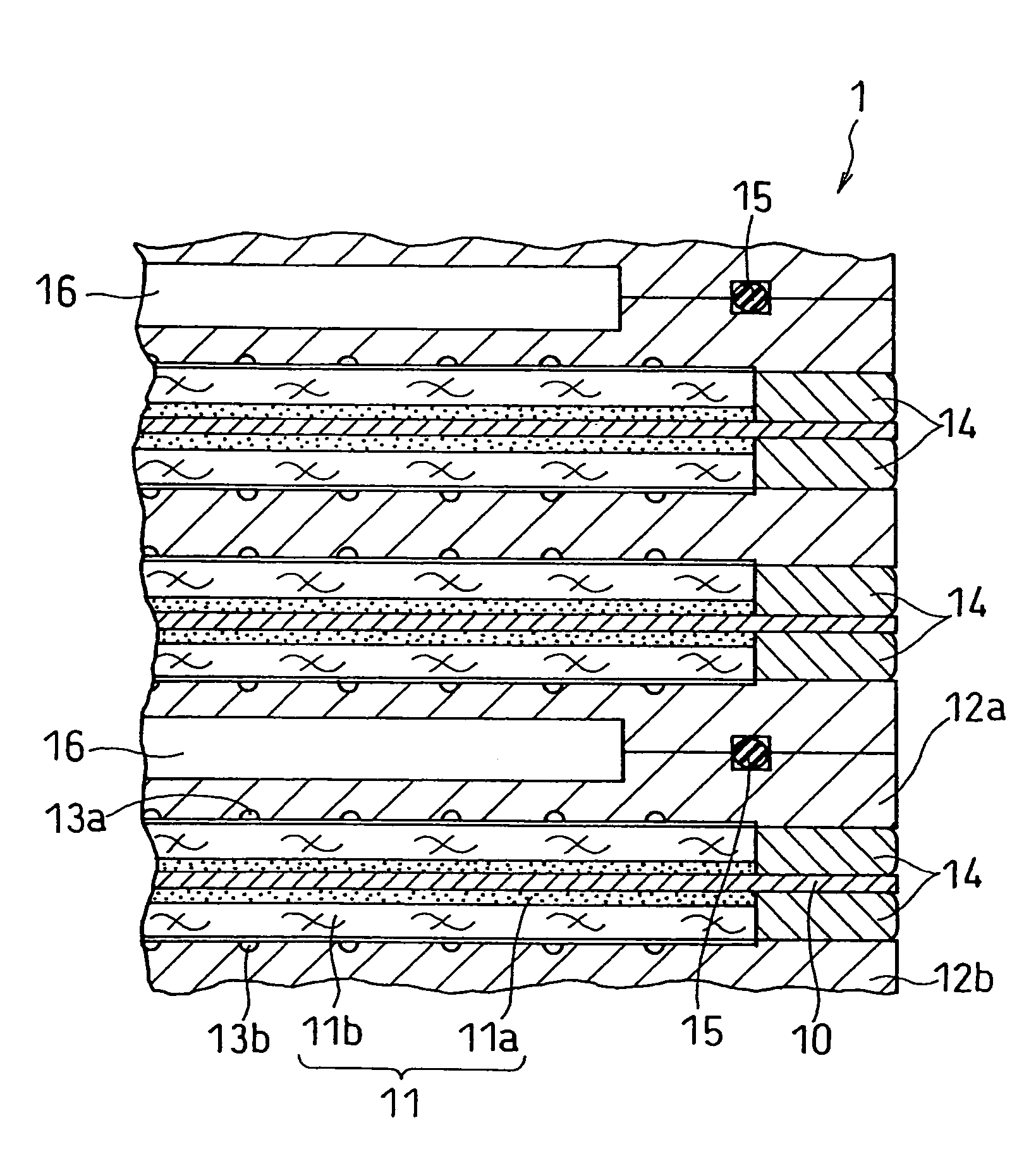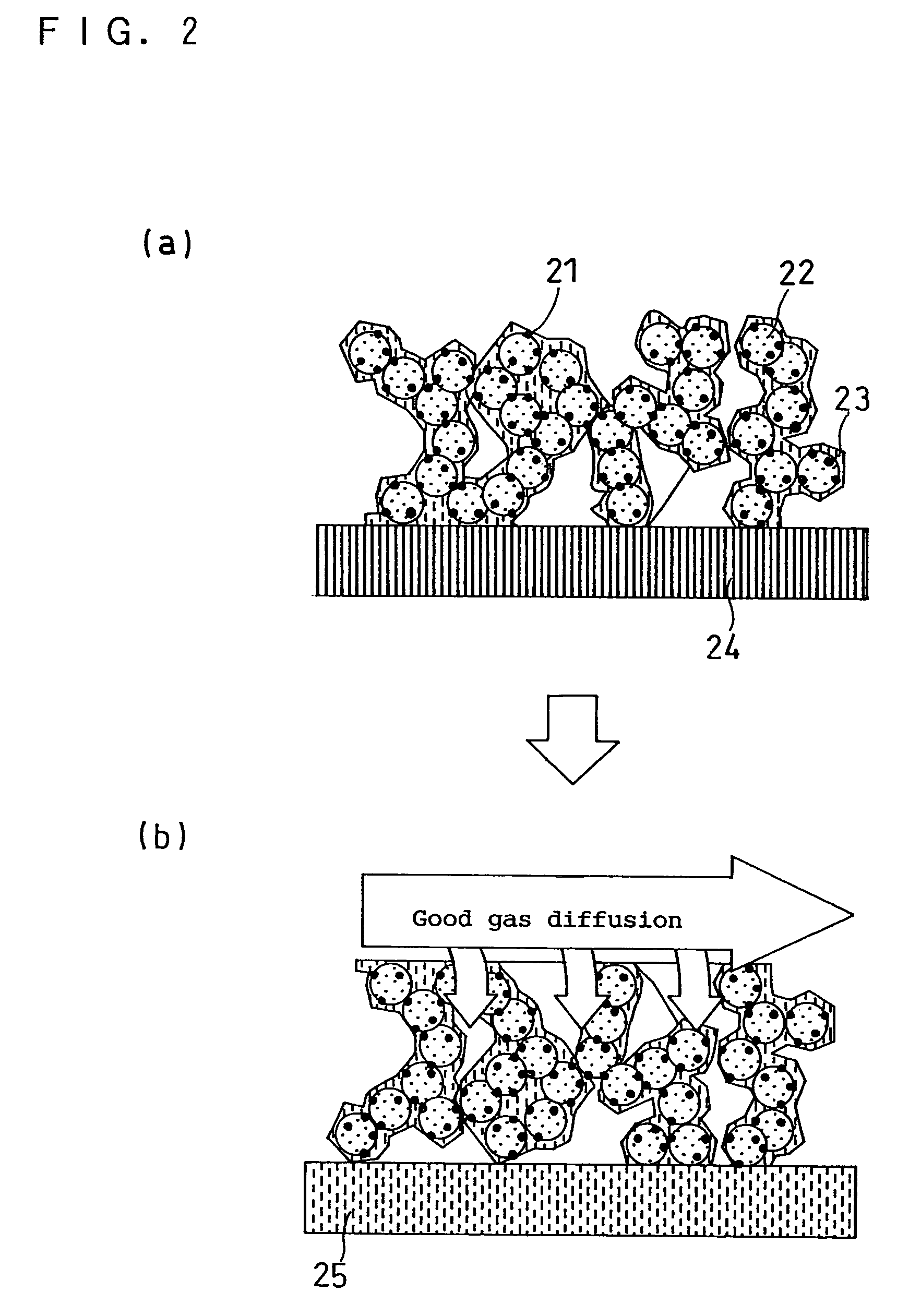Ink for forming catalyst layer, and electrode and membrane-electrode assembly using the same
a technology of electrodes and electrode electrodes, applied in the direction of organic compounds/hydrides/coordination complexes, physical/chemical process catalysts, cell components, etc., can solve the problems of uneven distribution of polymer electrolyte, easy flooding, and reduce the gas diffusion property of electrodes, so as to prevent flooding, maintain high cell voltage for a long time with ease and reliability, and facilitate and reliable manufacture
- Summary
- Abstract
- Description
- Claims
- Application Information
AI Technical Summary
Benefits of technology
Problems solved by technology
Method used
Image
Examples
examples 1-3
(a) Preparation of Catalyst Layer Ink
[0112]Catalyst-supporting particles comprising conductive carbon particles (mean particle diameter: 0.1 to 1.0 μm, TEC10E50E manufactured by Tanaka Kikinzoku Kogyo K. K.) and platinum as an electrode catalyst in the weight ratio of 1:1 were dispersed in a dispersion of a proton conductive polymer electrolyte in ethanol such that the weight ratio of the polymer electrolyte and the conductive carbon particles became 1:1. Thus, ink for forming a cathodic catalyst layer was obtained.
[0113]The polymer electrolyte concentration in the polymer electrolyte dispersion was 10 weight %. The proton conductive polymer electrolyte used was perfluorocarbonsulfonic acid (EW1100) having a mean inertia radius (2) in 100% ethanol and a molecular weight shown in columns A to C of Table 1.
[0114]Ink for forming an anodic catalyst layer was prepared in the same manner as the preparation of the cathode catalyst layer ink described above except that conductive carbon par...
PUM
| Property | Measurement | Unit |
|---|---|---|
| mean inertia radius | aaaaa | aaaaa |
| mean particle diameter | aaaaa | aaaaa |
| diameter | aaaaa | aaaaa |
Abstract
Description
Claims
Application Information
 Login to View More
Login to View More - R&D
- Intellectual Property
- Life Sciences
- Materials
- Tech Scout
- Unparalleled Data Quality
- Higher Quality Content
- 60% Fewer Hallucinations
Browse by: Latest US Patents, China's latest patents, Technical Efficacy Thesaurus, Application Domain, Technology Topic, Popular Technical Reports.
© 2025 PatSnap. All rights reserved.Legal|Privacy policy|Modern Slavery Act Transparency Statement|Sitemap|About US| Contact US: help@patsnap.com



